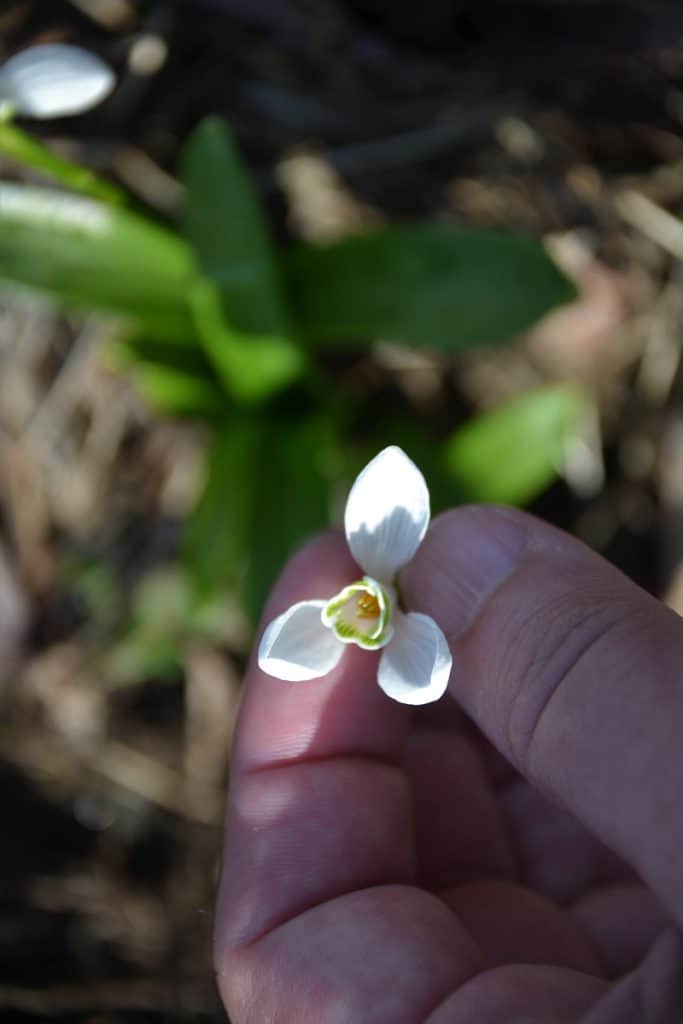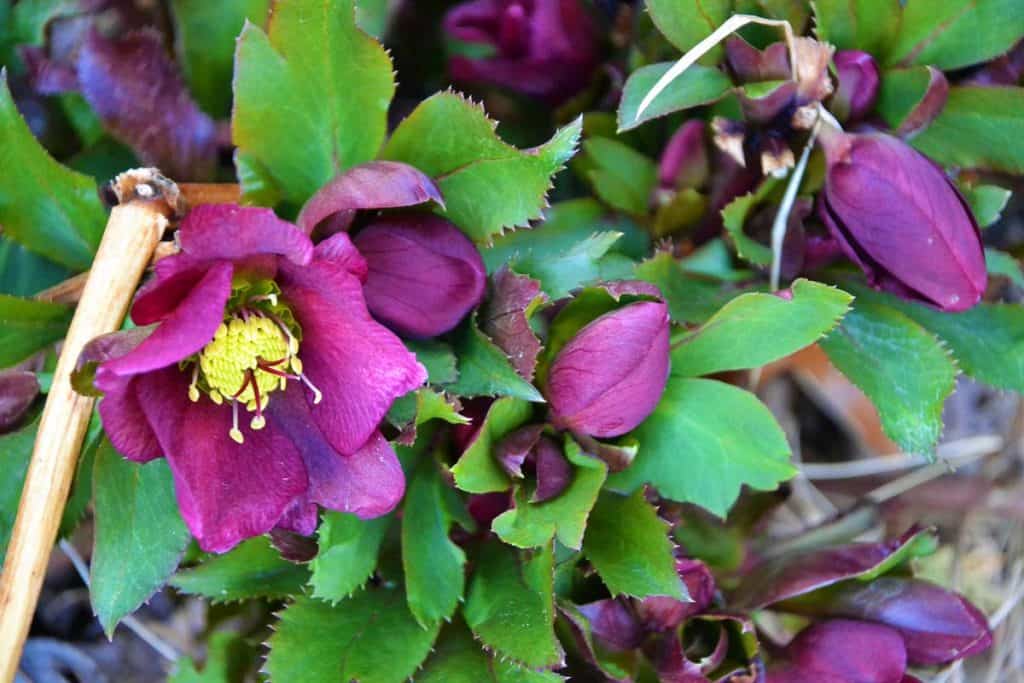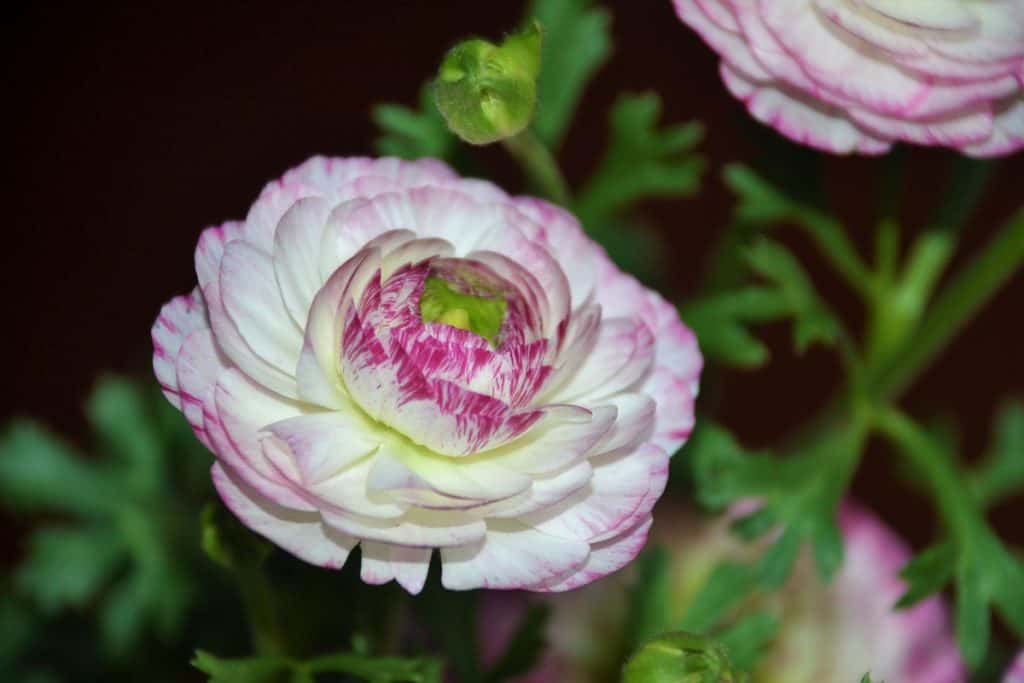Here’s what’s blooming in town this week to make your walks more enjoyable
Any walk around town will show many signs of spring this week – small herring were jumping in the river off the Saugus Iron Works pier; peepers have started their spring music in vernal pools; almost all traces of ice and snow are gone; and the first flowers are popping up in many gardens. I have nine different things in bloom outdoors today: snowdrops (Galanthus nivalis), heath (Erica darleyensis ‘Mediterranean Pink’ – blooming since mid-February), crocus (Crocus tomassinianus and Dutch hybrids), ‘Katharine Hodgkin’ iris (Iris ‘Katharine Hodgkin’), hellebores (Helleborus orientalis), winter aconite (Eranthis hyemalis), Siberian squill (Scilla sibirica) and Chinese witch hazel (Hamamelis chinensis) were all in flower on March 20, and two daffodils (Narcissus spp.) joined them the following day.
Three things are blooming right now which are members of the buttercup family (Ranunculaceae): Lenten rose (Helleborus orientalis) and winter aconite (Eranthis hyemalis) outside, Persian buttercup (Ranunculus asiatica) inside.
The Lenten rose that was showing its dark red buds near the front steps back in late January finally decided that it was warm enough to completely open. These are hybrids similar to the ones that bloomed indoors back at the end of February, but they have been living outside for several years now. As soon as the temperatures indoors and outdoors are close enough to prevent shocking the plants, the indoor Lenten roses will be planted outside, where I hope to enjoy them for years to come. As evergreen perennials, the leaves remain green until nearly blooming time, then they begin to turn brownish and dry, while new leaves emerge around the same time as the new blooms. Indoors, the leaves do not dry out as noticeably.
Winter aconite is one of the lesser-known early spring bulbs. It is one of the few bulbs that does not belong to the amaryllis family (Amaryllidaceae) or the lily family (Liliaceae), but instead to the buttercup family. Looking at the bright yellow color, it is easy to understand its connection to common buttercups (Ranunculus acris), which may be weeds in our lawns later this spring. Part of the reason it is not as widely grown as some other early bloomers is that the tuber does not tolerate a long, dried out dormancy. It cannot take the long period of storage and shipping that tulip and daffodil bulbs can, and must be planted earlier in fall. Also, winter aconite is unusual in that it actually prefers to be somewhat shaded during the growing season. As with some other buttercup family members, the petals are nearly nonexistent, and it is the sepals which have the bright yellow color. The short-stalked flowers are framed by tiny green leaves at bloom time. In England’s milder climate where the flowers bloom a bit earlier in the calendar year than in New England, it is sometimes nicknamed “New Year’s Gift.” The species epithet “hyemalis” actually means wintery. Mine began blooming during last Friday’s warm weather. The first bee of the year was sleeping in it by sundown of that day and spent a good deal of Saturday clasped in the blossom. Like the crocus, which is also in bloom now, the flower closes at night and in cloudy or cold weather to protect the delicate parts from being damaged.
While not common in our local gardens, a popular late winter/early spring greenhouse flower is Persian buttercup. Often simply called florists’ ranunculus, or sometimes misunderstood as ranuncula (singular) or ranunculas (plural), the blossom is so crowded with colorful petals it could compete with a rose. While in the wild in Eurasia flowers are usually yellow, it now is available in almost every color except true blue. It prefers night temperatures that are cool, but not freezing, for flowering. It is currently a popular cut flower as well as potted houseplant. It demands frequent watering and will wilt alarmingly if it dries out, but as long as it gets promptly watered it will be back to its beautiful self in just a few hours.
Editor’s Note: Laura Eisener is a landscape design consultant who helps homeowners with landscape design, plant selection and placement of trees and shrubs, as well as perennials. She is a member of the Saugus Garden Club and offered to write a series of articles about “what’s blooming in town” shortly after the outbreak of the COVID-19 pandemic. She was inspired after seeing so many people taking up walking.







